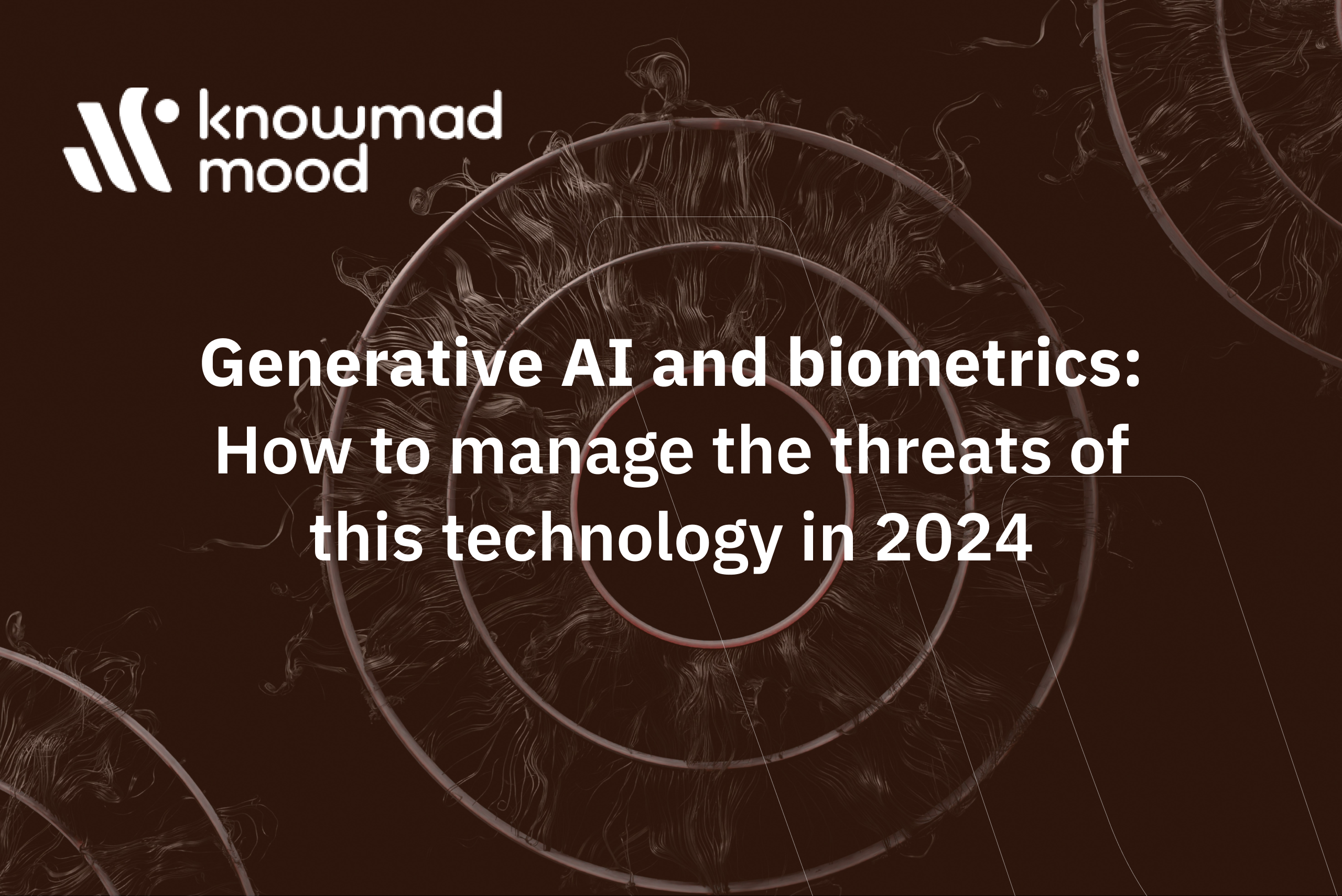
Generative AI and biometrics: How to manage the threats of this technology in 2024
Nowadays, the need for greater security and protection of devices and infrastructures in companies is driving the trend towards the adoption of technologies such as biometrics. In fact, according to a recent IDC report, 83% of companies worldwide are investing in improving consumer authentication processes and technologies, and 63% already use biometric identification systems for access to services, especially fingerprints and facial scans.
However, in the world of biometrics, the arrival and revolution of generative Artificial Intelligence poses several critical technological challenges to companies related to identity spoofing and access to private environments, such as the generation of fake faces and fingerprints, spoofing in bot-like systems or even the synthesis of the person’s voice. knowmad mood, a leading technology consultancy in digital transformation solutions, highlights some of the most effective countermeasures to these threats that companies will have to take into consideration this year.
Multi-factor authentication (MFA)
MFA, a security mechanism that adds additional layers of user identification, has become crucial to ensure greater access security. In fact, according to a study conducted by the Cyber Readiness Institute, 45% of Spanish SME entrepreneurs are already using this system. It is a combination of elements between what the user knows and possesses, such as a password, as well as what they are, through biometrics. This coordination between factors is powerful not only because it improves access security, but also because it offers an adaptive response to emerging threats.
Encryption of biometric data
Encrypting a company’s data or encrypting information is essential to avoid information and security breaches, which are one of the main threats to organizations worldwide. Thus, in the field of biometrics, ensuring the integrity and confidentiality of biometric information is also a strategic priority and its encryption is also a fundamental element to prevent these leaks of sensitive information ensuring the protection of the identity and privacy of individuals.
Proof-of-life detection
In biometrics, this is a system capable of detecting whether biometric data such as facial faces or fingerprints are real or fake, which makes it a powerful weapon against frauds and impersonations created through generative Artificial Intelligence. Although with the expected entry into force in 2026 of the so-called European Law on Artificial Intelligence it could only be used by the authorities in exceptional cases, it is a practice that, from the verification of movement, response to an action (smile, head turn, blink …) randomly, to the analysis of texture and depth, is increasingly evolved in order to be more effective and sophisticated to increase security.
Behavioral biometrics or analysis
This high-precision technology is used to verify users according to their behavioral patterns, identifying the unique attributes of each individual such as typing speed or interaction with the device used. Artificial Intelligence is playing an increasing role in this analysis of user behavior during the authentication process, as it allows for a more dynamic and accurate determination of authenticity, while at the same time enhancing the threat of identity theft. For all these reasons, this type of biometrics will be increasingly used by companies to protect their data and, according to Mordor Intelligence, the behavioral biometrics market will grow by more than 200% by 2029, compared to 2024.
“The future of biometric security in companies will depend on their ability to adapt to the new threats and challenges that are constantly emerging in the cybersecurity and biometrics landscape. Therefore, continuous innovation and collaboration among security experts are crucial to stay one step ahead in the fight against the ever-evolving technological threats. However, it is essential to understand that no security measure is completely foolproof and therefore the combination of multiple layers of protection is the most effective strategy to significantly reduce the risk of biometric spoofing,” says Santiago Ortiz Head of LoB Emerging Solutions at knowmad mood.

